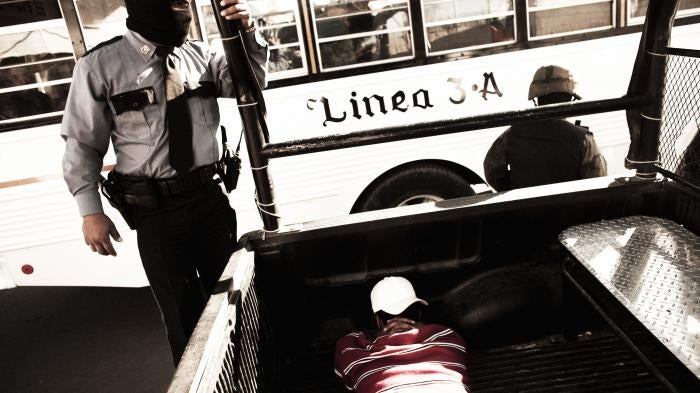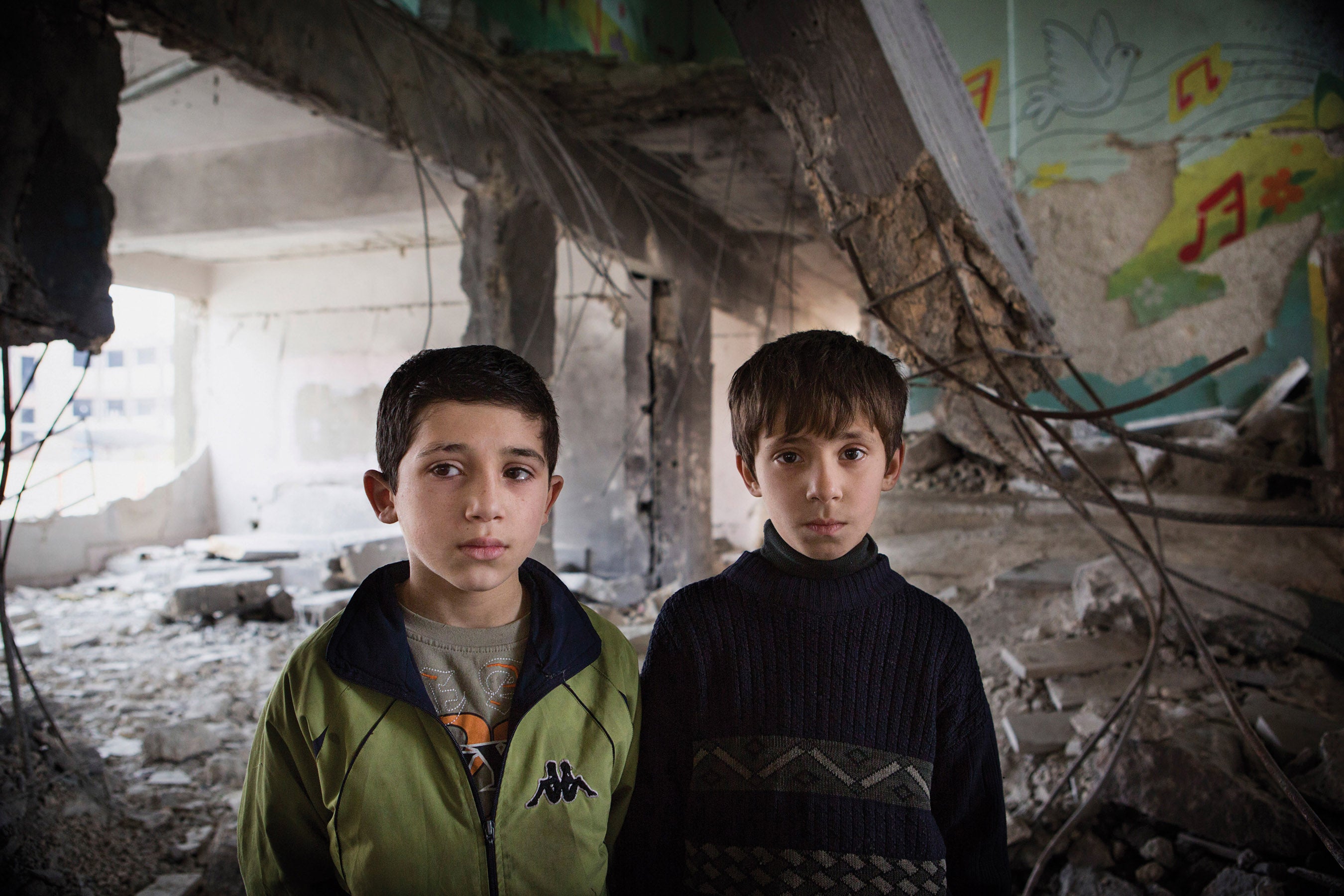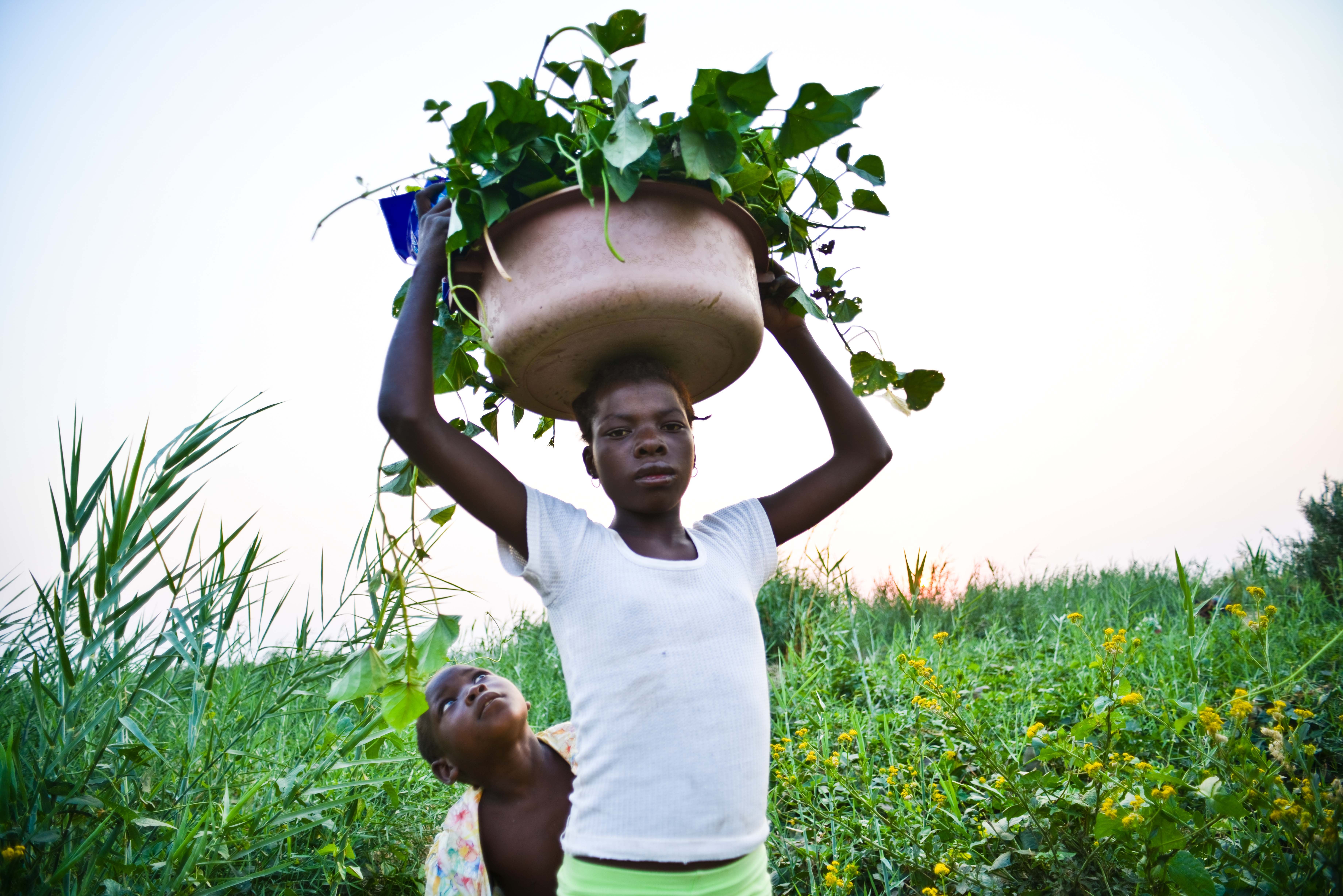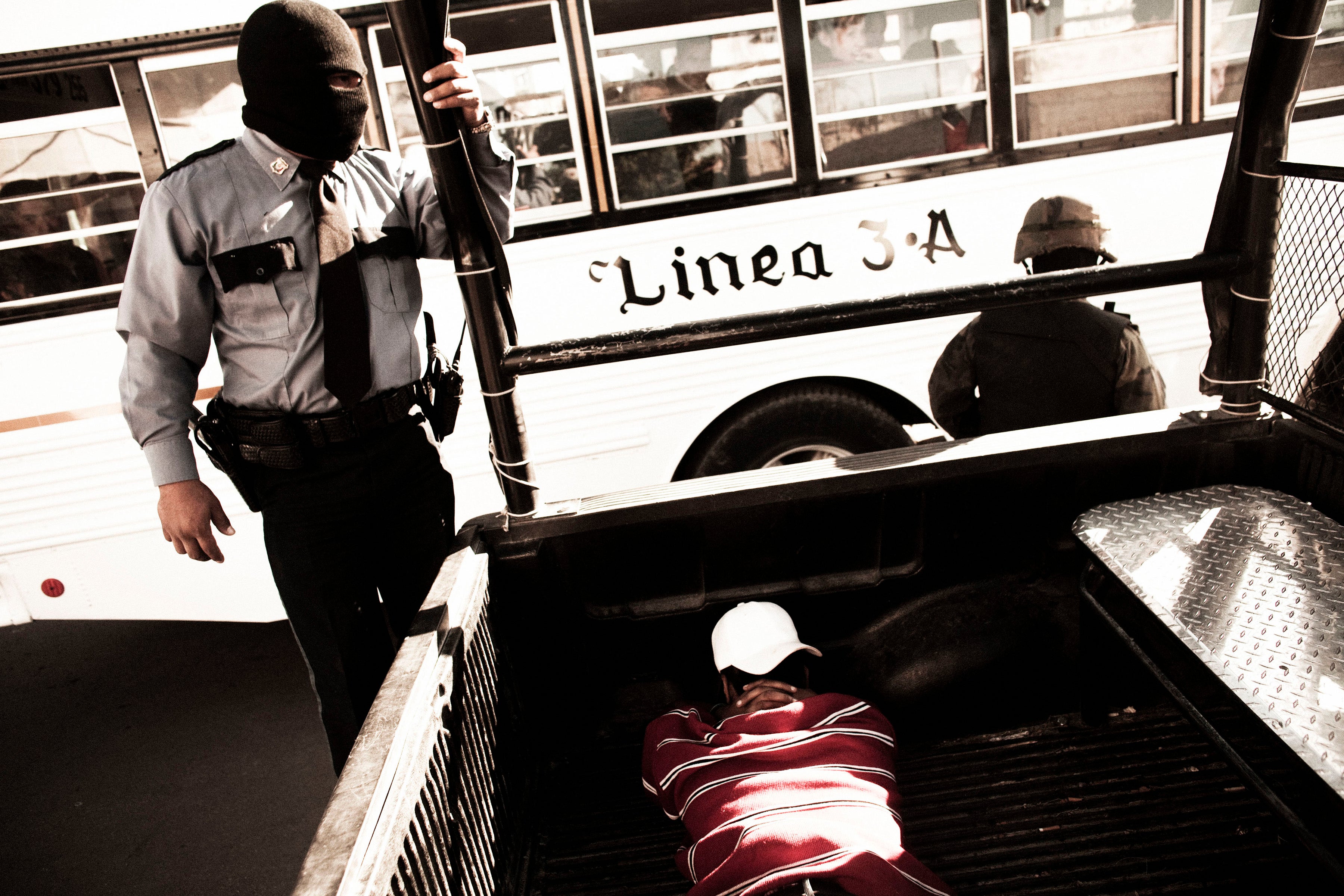Nearly every country in the world plays a part—as producer, consumer, or transit point—in the multibillion-dollar illicit drug trade that supplies more than 150 million people every year and keeps on growing.
To combat this trade, many countries over recent decades have launched so-called “wars on drugs” that entail crackdowns on participants large and small in the drug business, including harsh penalties for users.
Human Rights Watch has long documented the widespread human rights abuses resulting from this approach: in the United States, the devastation that disproportionate prison sentences for drug offenses have wrought on individuals and their families and disturbing racial disparities in drug law enforcement; in Mexico, the killings committed in the name of combatting drugs; in Canada, the US, and Russia, how fear of criminal law enforcement deters people who use drugs from accessing necessary health services, exposing them to violence, discrimination, and illness; in Afghanistan and Colombia, how narcotics production has fueled armed groups opposed or allied to the government; in India, Ukraine, and Senegal, how cancer patients suffer severe pain due to drug control regulations that render morphine inaccessible; and in China, Vietnam, and Cambodia, the “drug rehabilitation centers” where people are subjected to torture, forced labor, and sexual abuse.
But there was a growing sense within Human Rights Watch that this approach did not go far enough—that the problem did not lie merely with ill-considered policies or their abusive execution. Rather, the criminalization of drugs itself seemed to be inherently problematic. Especially when it came to personal possession and use, imposing the full force of the criminal justice system to arrest, prosecute, and incarcerate appeared contrary to the human rights to privacy and personal autonomy that underlie many rights.
Heavy emphasis on enforcing criminal prohibitions on drug production and distribution was also dramatically enhancing the profitability of illicit drug markets and fueling the growth and operations of groups that commit atrocities, corrupt authorities, and undermine democracy and the rule of law in many countries.
In my own work as Human Rights Watch’s Colombia researcher from 2004 to 2010, it was clear that the illicit drug market was a major factor in the country’s long-running war involving left-wing guerrilla groups, right-wing paramilitary groups, and security forces.
Certainly, Colombia’s staggering levels of abuse—massacres, killings, rape, threats, and kidnappings that displaced more than 3 million people—had roots that went beyond the drug trade and predated the explosion in the cocaine market in the 1970s. But most armed groups in Colombia in some way benefitted from the illicit trade. The paramilitaries, in particular, were among Colombia’s biggest drug lords. Often, they threatened or killed people living on land they wanted to control for coca production or as drug transportation corridors. Illicit drug profits helped pay for their weapons and uniforms, wages for their “soldiers,” and bribes for public officials to evade justice for their crimes.
So it became increasingly difficult—as we documented the atrocities, called for justice, and pressed the US to enforce human rights conditions on its assistance (the US provided Colombia more than US$5 billion in mostly military aid in 2000-2010)—to ignore that many of the abuses we advocated to end would inevitably continue in some form unless US and global drug policy itself changed.
My later work on US policy towards such countries as Afghanistan and Mexico, and on the US criminal justice system, only strengthened my view—which others at Human Rights Watch shared—that drug criminalization was inherently inconsistent with human rights.
After much discussion, the organization in 2013 adopted a policy calling on governments to decriminalize all personal use and possession of drugs. We also urged them to consider—and eventually adopt—alternative policies on the drug trade to reduce the enormous human rights costs of current approaches.
Change is urgent, as our research consistently shows.
Medellín: The More Things Change, the More They Stay the Same
Alex Pulgarín knew a lot about the power that the illicit drug trade gave to criminals—and the damage it could inflict.
When I interviewed him in 2007, he was a fresh-faced 30-year-old with an easy smile who looked younger than his age but spoke with the confidence of a seasoned player in the complicated politics of his city, Medellín, a major hub for Colombia’s cocaine trade.
As a child in the 1980s, Alex witnessed the bloody “war” the infamous Medellín cocaine kingpin Pablo Escobar waged against Colombia’s government in a bid to secure a ban on extraditions to the US. The car bombings, airplane hijackings, and frequent assassinations that Escobar ordered garnered Medellín the label, “murder capital of the world.”
So many rejoiced when Colombian security forces, with US backing, killed Escobar in 1993. But the bloodletting didn’t end there. As the world turned its attention elsewhere, others discreetly filled his shoes.
One of them was Diego Murillo, also known as “Berna,” a former Escobar rival who in the 1990s went on to build his own drug trafficking empire in Medellín, forging close ties with the paramilitaries. As a teenager in a low-income neighborhood, Alex saw his peers get swept into a seemingly endless cycle of brutality and death as Berna and others battled for control over the city.
But when I interviewed Alex, city officials were claiming that Medellín had turned a corner. The government and paramilitaries had announced a “peace deal,” and hundreds of young men had turned in weapons at “demobilization” ceremonies, signing up for government stipends. Former paramilitary leaders received reduced prison sentences. Homicide rates were near their lowest in years.
Among those who supposedly demobilized was Berna. Several of his henchmen formed the Democracy Corporation, a group with the ostensible mission of working with the city to help demobilized paramilitaries get education and jobs and reintegrate into society.
But Alex told a different story. The corporation, he said, was a front for organized crime, still under Berna’s control. The government’s backing gave the corporation a veneer of legality, allowing it to exert political influence while retaining its ruthless dominance over much of the city. “Peace with a knife to your throat,” as Alex called it.
A Democracy Corporation leader, Antonio Lopez (“Job”), had ordered his accomplices to kill demobilized individuals who disobeyed him—especially “coordinators,” point people for the demobilized in each neighborhood. Others confirmed what Alex said: the apparent peace that Medellín was experiencing was not due to Berna’s demobilization, but rather the result of his monopoly over crime in the city after he defeated most competing groups. And he was retaining that control in part through the Democracy Corporation.
While Alex knew many people in the world of local crime, he had taken a different path. He had become an activist, joined the left-leaning Democratic Pole party, and won a spot on his neighborhood action council. Respected and well-liked, he dreamed of running for higher office.
But Alex was now in Job’s sights. A few months earlier, Job had asked him to run for the Medellín City Council as the Democracy Corporation’s candidate, trying to capitalize on Alex’s popularity. Alex would get a car, armed guards, and a stipend if he agreed. He refused.
Instead, he began reporting what he knew to police and prosecutors, recording his calls with coordinators who were being threatened and sharing them with the authorities. He spoke during community meetings with international agencies and the Catholic Church. “Aren’t you afraid you’ll get killed?” I asked when we met. He brushed off the question.
Two years later, in 2009, it looked like Alex might emerge unscathed. Berna had been extradited to the US, where he pled guilty to cocaine trafficking charges and received a 31-year sentence from a federal court in New York City. Job had been gunned down, reportedly by rivals, in an upscale restaurant near Medellín. And Alex testified in a trial against another Democracy Corporation member, John William López, or Memín. Several witnesses were murdered during the trial, but Memín was convicted of forcibly interfering with elections, conspiracy, and forced displacement.
But it is hard to escape the grasp of Colombia’s criminal networks. That December, armed men—Memín associates—accosted Alex on the street and shot him several times in broad daylight. He died at the scene.
A Resilient and Lucrative Global Market
Profits from the illicit drug trade in Colombia have not only fueled the country’s conflict but have also enabled criminals to buy off or intimidate public officials. More than 100 Colombian congress members and countless other officials have been investigated in recent years for alleged collusion with paramilitaries. In Medellín, new groups with shadowy leadership structures have replaced Berna’s organization, much as Berna’s had replaced Escobar’s. Violence—often via threats and displacement—is pervasive.
These problems extend well beyond Colombia. In many countries illicit drug profits are an enormous motivator and funding source for groups that commit atrocities, corrupt authorities, and undermine democracy and the rule of law.
Indeed, according to the United Nations Office on Drugs and Crime (UNODC), illicit drugs constitute the largest income source for transnational crime and may account for one-fifth of all crime proceeds. The UNODC also estimated the value of the 2003 global illicit drugs market to be $322 billion at retail—higher than the gross domestic product of 88 percent of the world’s countries at the time.
Afghanistan, for example, produces around 90 percent of the world’s opium (along with cannabis). In 2009, the late Richard Holbrooke, then-US special representative for Afghanistan and Pakistan, decried how enforcing drug policies—particularly US efforts to eradicate poppy (a crucial crop for many impoverished Afghan farmers)—drove people “into the arms of the Taliban.” But that has only been part of the picture. The illegal opium market has dramatically distorted the country’s power structure, bankrolling armed groups such as the Taliban and local warlords responsible for numerous atrocities. It also fuels rampant corruption, making efforts to apprehend and prosecute those implicated in these crimes extraordinarily difficult.
Meanwhile, in Mexico the homicide rate has exploded, with at least 80,000 people killed in the country’s “war on drugs” since 2007 (El Salvador, Honduras, and Guatemala face similar problems). The US has provided more than $2 billion in funding to Mexico to combat drugs during that time. Yet the Mexican security forces deployed in the country’s “war on drugs” have themselves often been involved in torture, extrajudicial killings, and other abuses.
Tougher Enforcement?
The US, Russia, and other countries, with UNODC support, have argued the answer to the exploding violence and corruption around illicit drug markets is to vastly expand enforcement. For decades, they have poured billions of dollars into combatting drugs (some estimate at least $100 billion a year). With varying degrees of lawfulness they have pursued, surveilled, killed, extradited, prosecuted, and imprisoned kingpins and low-level dealers alike. They have fumigated crops, paid farmers to grow other crops, and interdicted shipments.
Yet, as the Global Commission on Drug Policy—a group of former presidents, senior UN officials, and prominent public figures—stated in its June 2011 report, these vast expenditures have “clearly failed to effectively curtail supply or consumption. Apparent victories in eliminating one source or trafficking organization are negated almost instantly by the emergence of other sources and traffickers.”
Indeed, as pressure increases in one place, the drug trade often shifts accordingly. My native country, Peru, recently replaced Colombia as the world’s largest producer of coca, according to UNODC—the same position it occupied in the 1980s.
In turn, “tough” enforcement has created its own nightmare for human rights protection. Thailand’s 2003 “war on drugs” resulted in some 2,800 extrajudicial killings by state security forces in its first three months. In Canada, Kazakhstan, Bangladesh, and Ukraine, police have violently mistreated people who use drugs. In Tanzania, police and quasi-official vigilante groups brutally beat people who inject drugs. Russia’s policies have resulted in mass incarceration, often in environments that pose high risk of HIV transmission, and detention of drug offenders without trial.
In countries such as Singapore and Malaysia, drug offenders face the death penalty. Iran imposes a mandatory death sentence for various drug offenses. Other countries impose grossly disproportionate punishment in drug cases. The US, for example, has the world’s largest reported incarcerated population (2.2 million people in adult prisons and jails), in significant part due to harsh sentences for drug offenses. Nearly a quarter of all prisoners—498,600 in 2011—including nearly half of federal inmates, were serving time for mostly low-level drug offenses. Some of those convicted, and many of those arrested, have done nothing more than use drugs, yet they will suffer the consequences of their conviction or arrest record for the rest of their lives. For immigrants, convictions, even for nonviolent offenses, can mean deportation and separation from their families.
US drug law enforcement is also marred by deep, discriminatory racial disparities. Although whites and blacks use and sell drugs at comparable rates in the US, blacks are arrested on drug charges at more than three times the rate of whites and are imprisoned for drug convictions at ten times the white rate.
The Harms of (Criminalizing) Drug Use
Proponents of criminalization of drug use often argue that it is necessary to protect individuals’ health and keep people from harming themselves or others.
It is legitimate for governments to address societal harms that may result from drug abuse. But policymakers too easily attribute social problems—domestic abuse, unemployment, or violence—to illicit drug use, when causes are more complex.
Imprisoning people who use drugs does little to protect their health: prisoners often find that drug treatment—as we found in New York—is not available. Recidivism of drug offenders is common.
Instead, criminalization often compounds existing harms. Fear of law enforcement can drive people who use drugs underground, deterring them from accessing health services and increasing the risk they face of violence, discrimination, and serious illness, as our research in Canada, the US, and Russia has shown. Outside Africa, one-third of HIV infections are attributable to contaminated injection equipment. But police enforcement of drug prohibitions is a barrier to providing sterile syringes, and incarceration makes it harder to treat and care for those already living with HIV.
Aggressive laws and enforcement also contribute to the stigmatization and abusive treatment of people who use drugs. Poor public education around drugs and their risks means that, in many countries, there is little understanding about the real harms that may flow from drug abuse, much less how to prevent or treat them.
The Pitfalls of Involuntary Treatment
While criminalization is deeply problematic, extrajudicial systems of drug control can also be extremely abusive. Thailand, for example, detains people who use drugs without trial for extended periods in locked “treatment facilities.” In China, the 2008 Anti-Drug Law allows officials to detain people who use drugs for up to six years with no trial or judicial oversight.
In Cambodia, Laos, and Vietnam, people who use drugs are held in government-run centers where they are often mistreated in the name of “treatment.” In Vietnam, detainees are used as forced labor to process cashews or manufacture clothes for export. In Cambodia, they are subjected to brutal punishments, including torture. In 2013, four years after we first reported on this issue, we found that individuals held in these drug detention centers are still being beaten, thrashed with rubber water hoses, forced to stand in septic water pits, and sexually abused. Lack of due process protections also renders these facilities convenient places to detain people whom Cambodian authorities consider “undesirable”—including homeless people and street children—in sporadic crackdowns often occurring before visits of foreign dignitaries.
A Human Rights Approach to Drug Control
To ensure their drug policies are in line with international human rights standards, governments should:
Decriminalize personal use and possession of drugs for personal use.
Laws criminalizing drug use are inconsistent with respect for human autonomy and privacy rights. Governments may limit these rights if necessary for a legitimate purpose, such as preventing harm to others. But like other private behavior that some may view as immoral (such as consensual homosexual conduct among adults), there is no legitimate basis for criminalization. Nor is criminalization necessary to protect people who use drugs: Governments have many non-penal measures to encourage people to make good choices around drugs, including offering substance abuse treatment and social support. Governments can also criminalize negligent or dangerous behavior (such as driving under the influence) to regulate harmful conduct by individuals who use drugs, without criminalizing drug use itself.
Reduce criminal regulation of drug production and distribution.
Criminalization of the drug trade carries enormous human rights costs, dramatically enhancing the profitability of illicit drug markets and fueling the growth and operations of groups responsible for large-scale violence and corruption. Finding alternative ways to regulate production and distribution and cutting into illicit drug profits would allow governments to weaken the influence of such groups and reduce the various abuses—killings, disproportionate sentencing, torture, and barriers to access to health care—that governments often commit in the name of fighting drugs.
Ground approaches to treatment and care in human rights, avoiding abusive administrative sanctions and ensuring patients have access to needed medications.
Governments should close drug detention centers where people are held in violation of international law and expand access to voluntary, community-based drug treatment with the involvement of competent nongovernmental organizations. They should also ensure that anyone with a legitimate medical need for controlled medications like morphine or methadone has adequate access to them.
Many alternatives to current policies have yet to be tested (except with respect to alcohol). So governments should assess proposed solutions carefully to reduce the risk they could lead to new problems or human rights concerns.
Yet, there are some models to consider: Some governments have decriminalized personal use and possession of illicit drugs or resisted enforcing certain prohibitions. In Portugal, in conjunction with comprehensive harm-reduction strategies, decriminalization had positive results; rather than substantially increasing, drug consumption reportedly dropped in some categories—as did recidivism and HIV infection. Researchers have also developed theoretical models for potential systems of drug regulation with varying ways of handling licensing, privatization versus state monopoly control of supply, taxation, public health education, the protection of children, and treatment. And some jurisdictions are beginning to put these models into practice.
A Changing Landscape
The pendulum is starting to swing on drug policy, with Mexico, Guatemala, and Colombia calling for a review of the global drug control regime. “As long as the flow of resources from drugs and weapons to criminal organizations [is] not stopped,” they said in a 2012 joint statement decrying the failure of current prohibitionist strategies, “they will continue to threaten our societies and governments.”
In a study in 2013 on the effectiveness of current policies, the Organization of American States opened up a discussion about their costs and outlined, without endorsing, various possible scenarios for future development—including decriminalization.
In December, Uruguay approved a law legalizing marijuana and establishing a regulated system of production and distribution for the drug, though a compulsory treatment bill was also pending at time of writing.
Change is slowly happening in the US, too. Attorney General Eric Holder in 2013 issued guidance for federal prosecutors that would allow US states to legalize marijuana, noting that a regulated market may further federal priorities of combatting organized crime. Washington State and Colorado are legalizing the possession, production, and distribution of marijuana for recreational use; 20 other states have legalized medical marijuana.
Several UN agencies and special rapporteurs have called for drug detention centers to close immediately. The United Nations Children’s Fund (UNICEF) called for all children to be removed from Cambodia’s centers; still, one in 10 people held in Cambodia’s centers today is a child.
Indeed, progress has been limited and fragile. Criminalization remains the tool of choice for drug control in most countries, where there is often little debate around harsh and counterproductive policies. Meanwhile, the devastating costs of the current approach—in lives lost to violence, people subjected to long prison terms, barriers to health, harm to families and communities, and damage to the rule of law—keep mounting. It is time to chart a new course.
Maria McFarland Sánchez-Moreno is deputy director of the US Division.





